Vivitar Series 1 450mm F/4.5 Catadioptric Aspherical VMC
Super telephoto prime lens • Film era • Discontinued
Abbreviations
| ASPHERICAL | The lens incorporates aspherical elements. |
| VMC | Multi-layer anti-reflection coating is applied to the surfaces of lens elements. This anti-reflection coating increases light transmission, eliminates flare and ghosting, and maintains color consistence among all lens models. |
Features highlight



Specification
| Production details: | |
| Announced: | 1982 |
| Production status: | ● Discontinued |
| Original name: | Vivitar Series 1 450mm 1:4.5 VMC |
| System: | - |
| Optical design: | |
| Focal length: | 450mm |
| Speed: | F/4.5 |
| Maximum format: | 35mm full frame |
| Mount and Flange focal distance: | Interchangeable mount (T) |
| Diagonal angle of view: | 5.5° (35mm full frame) |
| Lens construction: | 11 elements in 7 groups |
| 1 ASPH | |
| Internal focusing (IF) | |
| Diaphragm mechanism: | |
| Diaphragm type: | Fixed |
| Aperture control: | None |
| Focusing: | |
| Closest focusing distance: | 3.5m |
| Magnification ratio: | 1:5.6 at the closest focusing distance |
| Focusing modes: | Manual focus only |
| Manual focus control: | Focusing ring |
| Physical characteristics: | |
| Weight: | 1640g |
| Maximum diameter x Length: | ⌀117×147mm |
| Accessories: | |
| Filters: | Removable front filters are not accepted |
| Rear screw-type 35.5mm | |
| Lens hood: | Screw-type round |
| Teleconverters: | Vivitar Series 1 2X Macro Matched Multiplier for 450mm F/4.5 VMC → 900mm F/9 |
| Source of data: | |
| Scarce manufacturer's technical data + own research. | |
From the Popular Photography magazine (October 1982)
At Bauer, some Vivitar people showed us the first results of their cooperation with this (German) firm. Their first jointly made product is truly international. It is designed by an American, and parts of the lens will come from Taiwan, W. Germany, and Cincinnati, Oh.
It's made like no other lens that we know of. It is a glass/plastic hybrid with a front and rear window, along with an "O"-ring system of mounting the various 13 elements for a moisture-resistant sealed construction. The lens is a 450mm f/4.5 catadioptric with a plastic aspherical element. That's the main reason for the elaborate sealing measures: to prevent the plastic element's exposure to moisture.
What's more, the plastic barrel's exterior is rubber-coated from improved shock resistance. Focusing is internal, with the close limit being 3.5m for a reproduction ratio of 1:8. The near setting is reached by a 238-degree twist from infinity. With an aperture of f/4.5, the new mirror lens should cause no black-out of the focusing aids in most SLRs. Its rear-mounted filters are the 35.5mm threaded type.
Thanks to its unique construction of glass, plastic, and aluminum, the lens is compact and lightweight, measuring 105x148mm and weighing 1.2kg. It will be available in "T" mount with adapters from Vivitar for most popular SLR cameras. It will be the latest addition to Vivitar's Series 1 line of lenses, all of which feature something unique (in their judgement) to qualify for that designation.
From the Popular Photography magazine (January 1983)
Additional details are now available on the Vivitar Series 1 450mm f/4.5 mirror lens, first seen in our October issue. This multinational design uses a large, acrylic element with one aspheric surface to achieve its relatively high speed at a reasonable weight. Closest focus is 3.5m, giving 1:5.6 image magnification on film. With the seven-element 2X Matched Multiplier, the lens becomes a 900mm f/9, with 1:2.8 focusing capability.
An innovative Vivitar T-mount adapter has a click-stopped rotating adjustment to allow proper orientation on any SLR. The adapter is removed to permit the multiplier to be threaded on the rear of the lens, then it's reattached behind the multiplier. Available: February, 1983.
From the Modern Photography magazine
Just as incredible today is the hand-holdable Vivitar Series 1 450mm f/4.5 macro focusing mirror optic with a coated aspheric plastic element, first announced in 1982! The U.S.A. designed optic (by Opcon Associates under contract to Vivitar) with plastic element made by U.S. Precision in Cincinnati, then shipped to Taiwan for assembly with other parts made in Japan and Taiwan, should be reaching photo dealers just about now in actual production form - and it too appears to be well worth waiting for. Our early production lens is 5 3/4 in. long, 4 1/2 in diameter weighing some 3 1/2 lbs., has a water resistant gray, rubberish, easy-to-grip outer coating and a handy rear focusing ring providing focus to less than 12 feet.
While there have been many good [text omitted] and 600 f/8 mirror lenses, Vivitar is the first - and only handholdable one in that range - with an incredible f/4.5 aperture providing excellent finder brightness with no split-image range-finder blackout. You can virtually focus on an eyelash at 25 feet.
From the Field & Stream magazine (April 1984)
Basically the 500mm f/8 is a sunshine lens for offhand use. But there are faster, shorter models - Sigma's 400mm f/5.6, and the soon-to-be-available Vivitar Series I 450mm f/4.5, for example. With these you could use slower, higher-resolution films in bright light. Loaded with ASA 400, you could operate when lower light levels would knock out a 500mm f/8.
Typical characteristics of mirror (reflex) lenses
- Catadioptric system consisting of curved mirrors and optical glass;
- Much shorter, lighter and less expensive designs than conventional super telephoto lenses;
- Outstanding correction of chromatic aberrations;
- Since the aperture is fixed, neutral density filters are used to obtain a smaller aperture;
- Doughnut-shaped out-of-focus highlights.
From the editor
This lens is unique not only because of its speed of F/4.5, but due to the aspherical plastic lens element adopted in the front group, plastic lens barrel, inner focusing, dedicated teleconverter, rotatable T mount adapter, etc. It is packed with a number of features that set it apart from previous mirror lenses.
ND-2X, ND-4X, K2 and 25A rear 35.5mm screw-type filters were part of the package.
Notes
- Independent-brand lenses were made for 35mm film SLR cameras by companies that competed with the camera manufacturers. Some came from factories that made lenses under their own brand names (Angenieux, Kiron, Sigma, Tamron, Tokina). Many others were national and international marketing organizations (Kalimar, Panagor, Rokunar, Soligor, Starblitz) that bought lenses from anonymous manufacturers. One firm — Vivitar — actually designed its own lenses and accessories, which were then subcontracted to manufacturing firms. Still others were private labels, sold only by specific photo specialty shops (Cambron, Quantaray, Spiratone).
- The actual manufacturer of a Vivitar lens can be identified by the first digits of the serial number: 09 - Cosina, 13 - Schneider-Kreuznach, 19 - Sigma, 22 - Kino Precision Industries, 25 - Ozone Optical, 28 - Komine, 32 - Makina Optical, 33 - Asanuma, 37 - Tokina, 42 - Eugen Bauer, 44 - Perkin Elmer, 47 - Chinon, 51 - Tokyo Trading, 56 - Kyoe Shoji, 61 - Samyang, 6x - Olympus, 75 - Hoya, 77 - Kobori, 81 - Polar, 9x - Cosina. This numbering system, however, was used by Vivitar only between 1969 and 1991 (approx.).
- This Vivitar lens has s/n 42xxxxxx, therefore it was produced by Eugen Bauer.
Lenses with similar focal length
Sorted by manufacturer name
| ■Interchangeable mount (31) | |||||||||
| Chinon 500mm F/8 Mirror [T] aka Hanimex 500mm F/8 Mirror aka Listar 500mm F/8 Mirror aka Marexar 500mm F/8 Mirror aka Porst 500mm F/8 Mirror aka Quantaray 500mm F/8 Mirror aka Starblitz 500mm F/8 Mirror aka Super-Danubia 500mm F/8 Mirror aka Toyo Optics 500mm F/8 Mirror | -- | 5 - 4 | 2.50m | ⌀77 | ● | ||||
| Kenko 400mm F/8 Mirror MC [T] | -- | 6 - 2 | 1.15m | ⌀67 | 2012 ● | ||||
| Kenko 400mm F/8 Mirror MC N II [T] | -- | 6 - 2 | 1.15m | ⌀67 | 2017 ● | ||||
| Kenko 400mm F/8 Mirror MC N II S [T] | -- | 6 - 2 | 1.15m | ⌀67 | 2021 ● | ||||
| Zoomar Muenchen Sport-Reflectar 500mm F/5.6 [II] | -- | 4 - ? | 5.60m | -- | 1970 ● | ||||
| Zoomar Muenchen Sport-Reflectar 500mm F/5.6 [I] | -- | 4 - ? | 5.60m | -- | 1968 ● | ||||
| Makina Makinon 500mm F/8 Reflex MC [T] | -- | 8 - 6 | 2.20m | ● | |||||
| Makina Makinon 400mm F/6.7 Reflex MC [T] | -- | 8 - 6 | 1.70m | ● | |||||
| Panagor 500mm F/8 Reflex [PMC] [T] aka Osawa 500mm F/8 Reflex MC | -- | 6 - 5 | 4.00m | -- | ● | ||||
| Samyang Mirror 500mm F/6.3 DX [T] aka Bower Mirror 500mm F/6.3 DX aka Kenko Mirror 500mm F/6.3 DX aka Opteka Mirror 500mm F/6.3 DG aka Phoenix Mirror 500mm F/6.3 TDX aka Rokinon Mirror 500mm F/6.3 DX aka Walimex Pro 500mm F/6.3 | -- | 7 - 6 | 2.00m | ⌀95 | 2008 ● | ||||
| Samyang Mirror 500mm F/8 MC [T] aka Albinar Mirror 500mm F/8 MC aka Bower Mirror 500mm F/8 MC aka Cambron Mirror 500mm F/8 MC aka Centon Mirror 500mm F/8 MC aka Danubia Mirror 500mm F/8 MC aka Exakta Mirror 500mm F/8 MC aka Focal Mirror 500mm F/8 MC aka Hanimex Mirror 500mm F/8 [HMC] aka Kalimar Mirror 500mm F/8 MC aka Kenko Mirror 500mm F/8 MC aka Nikura Mirror 500mm F/8 MC aka Opteka Mirror 500mm F/8 MC aka Phoenix / Samyang Mirror 500mm F/8 MC aka Phoenix Mirror 500mm F/8 MC aka Promaster Spectrum 7 Mirror 500mm F/8 aka Prospeo Mirror 500mm F/8 MC aka Quantaray CN Mirror 500mm F/8 MC aka Rokinon Mirror 500mm F/8 MC aka Rokunar Mirror 500mm F/8 MC aka Sakar Mirror 500mm F/8 MC aka Vivitar Mirror 500mm F/8 MC 1:2.7x Macro aka Vivitar Series 1 Mirror 500mm F/8 MC aka Walimex Mirror 500mm F/8 MC | -- | 7 - 6 | 1.72m | ⌀72 | ● | ||||
| Sigma[-XQ] MF 500mm F/4 Mirror [T] aka Accura 500mm F/4 Mirror | -- | 5 - 5 | 15.00m | -- | 1971 ● | ||||
| Sigma[-XQ] MF 500mm F/8 Mirror [T] aka Spiratone Mirror-Ultratel 500mm F/8 | -- | 5 - 5 | 4.00m | ⌀77 | 1967 ● | ||||
| Soligor C/D 500mm F/8 Mirror MC [T] | -- | 5 - 4 | 2.50m | ⌀72 | ● | ||||
| Soligor S/M 500mm F/8.8 Mirror MC [T] aka Cambron 500mm F/8.8 Mirror MC aka Sirius 500mm F/8.8 Reflex MC | -- | 7 - 5 | 2.50m | ⌀67 | 1989 ● | ||||
| Soligor C/D 500mm F/8 Mirror MC [T] | -- | ? - ? | 2.50m | ⌀67 | ● | ||||
| Soligor C/D 500mm F/8 Mirror MC [T] | -- | 5 - 4 | 2.50m | ⌀77 | ● | ||||
| ZM-5A 500mm F/8 [MC] [T] | -- | 4 - 4 | 4.00m | ⌀77 | ● | ||||
| ZM-6A 500mm F/6.3 [MC] [T] | -- | ? - ? | 6.00m | ⌀95 | ● | ||||
| Spiratone Minitel-M 500mm F/8 Mirror Plura-Coat [T] aka Cambron 500mm F/8 Mirror MC | -- | 7 - 6 | 1.70m | ⌀72 | 1981 ● | ||||
| Spiratone Minitel 500mm F/8 Mirror [T] aka Revuenon 500mm F/8 Mirror aka SP Zivnon 500mm F/8 Reflex | -- | 6 - 5 | 4.00m | ⌀77 | 1978 ● | ||||
| Spiratone Minitel-C 500mm F/8 Mirror [T] | -- | 5 - 4 | 3.60m | ⌀77 | 1980 ● | ||||
| Tamron SP 500mm F/8 Mirror 55B [Adaptall-2] | -- | 7 - 4 | 1.70m | ⌀82 | 1979 ● | ||||
| Tamron SP 500mm F/8 Mirror 55BB [Adaptall-2] | -- | 7 - 4 | 1.70m | ⌀82 | 1983 ● | ||||
| Tokina SZX 400mm F/8 Reflex MF [T] | -- | 6 - 5 | 1.15m | ⌀67 | 2020 ● | ||||
| Tokina SZ 500mm F/8 Reflex MF [T] | -- | 7 - 7 | 1.70m | ⌀72 | 2022 ● | ||||
| Lentar 500mm F/8 Mirror [T] aka Camron 500mm F/8 Mirror aka Chinon 500mm F/8 Mirror aka Hanimex 500mm F/8 Mirror aka Kalimar 500mm F/8 Mirror aka Listar 500mm F/8 Mirror aka Prinz Miroflex 500mm F/8 aka Quantaray 500mm F/8 Mirror aka Rexatar 500mm F/8 Mirror aka Samigon 500mm F/8 Mirror aka Soligor 500mm F/8 Mirror aka Telesar 500mm F/8 Mirror aka Vemar 500mm F/8 Mirror | -- | ? - ? | 3.50m | ● | |||||
| Prinz 500mm F/8 Mirror [T] | -- | 4 - 4 | 3.00m | ● | |||||
| Celestron 500mm F/8 Mirror MC [T] | -- | ? - ? | 1.70m | ⌀72 | ● | ||||
| Carl Zeiss Mirotar 500mm F/4.5 | -- | 5 - 5 | 3.50m | -- | 1975 ● | ||||
| Carl Zeiss Jena DDR Spiegelobjektiv 500mm F/4 | -- | 4 - 3 | 7.00m | -- | 1955 ● | ||||
| ■Canon FD mount (6) | |||||||||
| Canon FD Reflex 500mm F/8 S.S.C. | -- | 6 - 3 | 4.00m | -- | 1978 ● | ||||
| Canon FDn Reflex 500mm F/8 | -- | 6 - 3 | 4.00m | -- | 1980 ● | ||||
| Makina Makinon 500mm F/8 Reflex MC | -- | 8 - 6 | 2.20m | 1980 ● | |||||
| Makina Makinon 400mm F/6.7 Reflex MC | -- | 8 - 6 | 1.70m | 1980 ● | |||||
| Sigma MF 400mm F/5.6 Mirror | -- | 7 - 7 | 2.00m | ⌀86 | 1982 ● | ||||
| RMC Tokina 500mm F/8 | -- | 7 - 2 | 1.50m | -- | 1978 ● | ||||
| ■Contax/Yashica mount (7) | |||||||||
| Makina Makinon 500mm F/8 Reflex MC | -- | 8 - 6 | 2.20m | 1980 ● | |||||
| Makina Makinon 400mm F/6.7 Reflex MC | -- | 8 - 6 | 1.70m | 1980 ● | |||||
| Sigma MF 400mm F/5.6 Mirror | -- | 7 - 7 | 2.00m | ⌀86 | 1982 ● | ||||
| RMC Tokina 500mm F/8 | -- | 7 - 2 | 1.50m | -- | 1978 ● | ||||
| Yashica ML Reflex 500mm F/8 | -- | 8 - 6 | 2.50m | -- | 1982 ● | ||||
| Yashica Reflex 500mm F/8 | -- | 6 - 5 | 4.00m | -- | 1975 ● | ||||
| Carl Zeiss Mirotar T* 500mm F/8 | -- | 6 - 4 | 3.50m | E82 | 1997 ● | ||||
| ■Konica AR mount (4) | |||||||||
| Makina Makinon 500mm F/8 Reflex MC | -- | 8 - 6 | 2.20m | 1980 ● | |||||
| Makina Makinon 400mm F/6.7 Reflex MC | -- | 8 - 6 | 1.70m | 1980 ● | |||||
| Sigma MF 400mm F/5.6 Mirror | -- | 7 - 7 | 2.00m | ⌀86 | 1982 ● | ||||
| RMC Tokina 500mm F/8 | -- | 7 - 2 | 1.50m | -- | 1978 ● | ||||
| ■M42 mount (8) | |||||||||
| Makina Makinon 500mm F/8 Reflex MC | -- | 8 - 6 | 2.20m | 1980 ● | |||||
| Sigma MF 400mm F/5.6 Mirror | -- | 7 - 7 | 2.00m | ⌀86 | 1982 ● | ||||
| Rubinar 500mm F/8 Mirror MC Macro | -- | ? - ? | 2.20m | ⌀77 | ● | ||||
| Rubinar 500mm F/5.6 Mirror MC Macro | -- | ? - ? | 2.20m | ⌀105 | ● | ||||
| ZM-5SA 500mm F/8 MC | -- | 4 - 4 | 4.00m | ⌀72 | ● | ||||
| RMC Tokina 500mm F/8 | -- | 7 - 2 | 1.50m | -- | 1978 ● | ||||
| Yashica Reflex Yashinon 500mm F/8 | -- | 6 - 5 | 4.00m | -- | 1973 ● | ||||
| Yashica Reflex Yashinon-DX 500mm F/5 | -- | 6 - 5 | 10.00m | -- | ● | ||||
| ■Minolta SR mount (5) | |||||||||
| Makina Makinon 500mm F/8 Reflex MC | -- | 8 - 6 | 2.20m | 1980 ● | |||||
| Makina Makinon 400mm F/6.7 Reflex MC | -- | 8 - 6 | 1.70m | 1980 ● | |||||
| Minolta RF Rokkor 500mm F/8 | -- | 6 - 5 | 4.00m | ⌀77 | 1977 ● | ||||
| Sigma MF 400mm F/5.6 Mirror | -- | 7 - 7 | 2.00m | ⌀86 | 1982 ● | ||||
| RMC Tokina 500mm F/8 | -- | 7 - 2 | 1.50m | -- | 1978 ● | ||||
| ■Nikon F mount (7) | |||||||||
| Makina Makinon 500mm F/8 Reflex MC | -- | 8 - 6 | 2.20m | 1980 ● | |||||
| Makina Makinon 400mm F/6.7 Reflex MC | -- | 8 - 6 | 1.70m | 1980 ● | |||||
| Nikon Reflex-Nikkor 500mm F/5 | -- | 5 - 4 | 15.00m | ⌀122 | 1961 ● | ||||
| Nikon Reflex-Nikkor[·C] 500mm F/8 | -- | 5 - 3 | 4.00m | ⌀88 | 1968 ● | ||||
| Nikon Reflex-Nikkor 500mm F/8 | -- | 6 - 6 | 1.50m | ⌀82 | 1983 ● | ||||
| Sigma MF 400mm F/5.6 Mirror | -- | 7 - 7 | 2.00m | ⌀86 | 1982 ● | ||||
| RMC Tokina 500mm F/8 | -- | 7 - 2 | 1.50m | -- | 1978 ● | ||||
| ■Olympus OM mount (5) | |||||||||
| Makina Makinon 500mm F/8 Reflex MC | -- | 8 - 6 | 2.20m | 1980 ● | |||||
| Makina Makinon 400mm F/6.7 Reflex MC | -- | 8 - 6 | 1.70m | 1980 ● | |||||
| Olympus Zuiko Reflex 500mm F/8 | -- | 5 - 2 | 4.00m | ⌀72 | 1983 ● | ||||
| Sigma MF 400mm F/5.6 Mirror | -- | 7 - 7 | 2.00m | ⌀86 | 1982 ● | ||||
| RMC Tokina 500mm F/8 | -- | 7 - 2 | 1.50m | -- | 1978 ● | ||||
| ■Pentax K mount (6) | |||||||||
| Makina Makinon 500mm F/8 Reflex MC | -- | 8 - 6 | 2.20m | 1980 ● | |||||
| Makina Makinon 400mm F/6.7 Reflex MC | -- | 8 - 6 | 1.70m | 1980 ● | |||||
| Sigma MF 400mm F/5.6 Mirror | -- | 7 - 7 | 2.00m | ⌀86 | 1982 ● | ||||
| Rubinar 500mm F/8 Mirror MC Macro | -- | ? - ? | 2.20m | ⌀77 | ● | ||||
| Rubinar 500mm F/5.6 Mirror MC Macro | -- | ? - ? | 2.20m | ⌀105 | ● | ||||
| RMC Tokina 500mm F/8 | -- | 7 - 2 | 1.50m | -- | 1978 ● | ||||
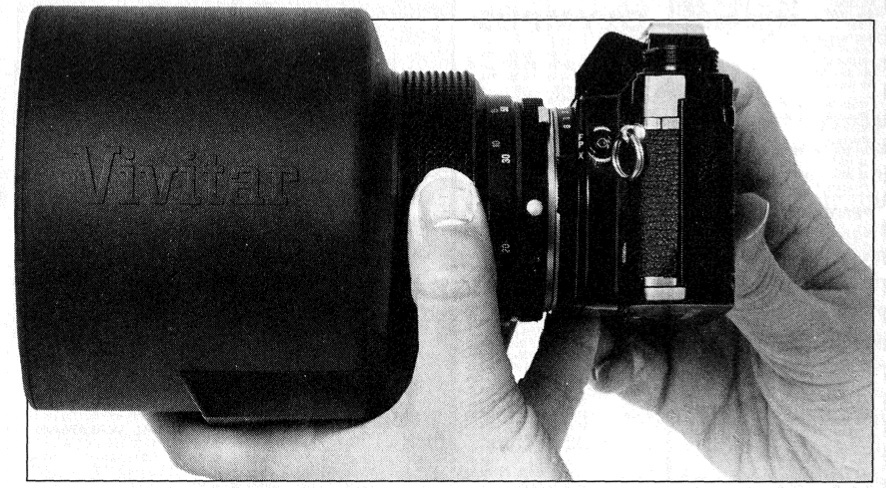
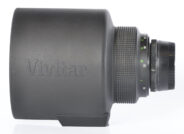
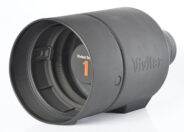
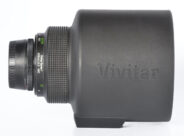

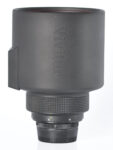

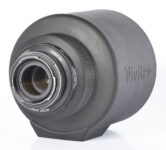
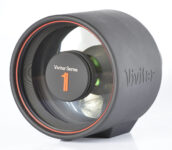
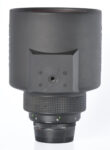
D-Filter-Designation misleading: ND 0.3 Not ND-3 if then ND.3
ND 3= 10 stops 1000x Kodak Filter for the Professional Photographer page 15 (Red A4 Informationbook) P-I 1 Kodak Stuttgart Germany
35.5mm filter
ND-3(2x) 1 Blende ND 0.3
ND-6(4x) 2 Blenden ND 0.6
K2 MittelGelb (K1 Hellgelb, K3 Dunkelgelb)
25A Rot
Heliopan.de has these also special coated. see their pdf preisliste/pricelist
35.5mm is right not 35 mm like elsewhere.
original Series 1 adapters must be used since they have all the mandatory rear filter.600/8 has it screw in rear element where other filters can be used. adding or replacing? they have genious 10° segmented (36x) rotation since no rotator on lens itself.
cam-adjustment/centering) made by playing with the screws and rotation-mechanisme.hard to explain. How is the adapter removed. how is it attached. with screws maybe inside. accessible after removing rotatary ring? i am think about using heat-laying on ceramic stove disc at periphers for 5 10 or 15 sec after heating up(at half no 5 or 10).old working method when having stiff screws or helicoids(the latter only temporarily working). no plastic or rubber near heat. gloves used and pressing against rubber surface.
tried to remove nikon-mount with no success. there is a dustfilter 32 x2mm with 35.5mm thread ring. most be also mandatory bit its in the mount not lens like in 600/8 CAT or 800/11.was unsure if its plastic or not and thing or thick. soi removed before adding heat. it doesnt move. someone told its T-mount. difference to T2? why cant i remove? solution?
found THE solution how to remove sticky rotatary adapter. here Nikon. first i took apart unmounted FD version to know the mechanisme. its highly sophisticated 10° segmented rotation. the solution is using a zyliss glassjars-opener. there are two versions. the ones i have are 1. wide rubber string, only one end attached. for opening sticky P6-mount-ring when bellows is attached(no real space for fingers let alone when sticky) i cut down from 12 to 7mm. 2. same instrument but easier to use since both ends attache to handle which with rotation can adjust lenght. product from zyliss here not rubber more stiff material. at handle -end which is holding to force by pressing against the adapter here i added thin double-tape. the problem now are the two rotation-blocking/releasing buttoms on eigher sides. they would be pressed and camera-side would rotated, the lens-side would stay mounted. i added 2-3 thin spacers bigger than the knobs to slip over them and pushing under the knob-heads. taped with metallic tape. instrument layed around, tighend and in 10 sec. adapter was freed. no real force no zippo nothing. i have the protection glass and adapter removed. its unneeded also possible 35.5mm filter can stay attached. here UV-haze- so protection filter must be neutral but may have an optical function. who knows.
series 1 450/4.5 adapters for rotation are not all identical. pushing knobs for rotation are different. means the method of removing adapter for nikon-version differs from other one. one must use the removal tool i described elswhere how to open kiev60/P6 ring when bellows are stuck. it has wide rubber-band which must be cut down to 8mm. only this tool cab be used since band can be wrapped around. its made for kitch and its lid-opener.